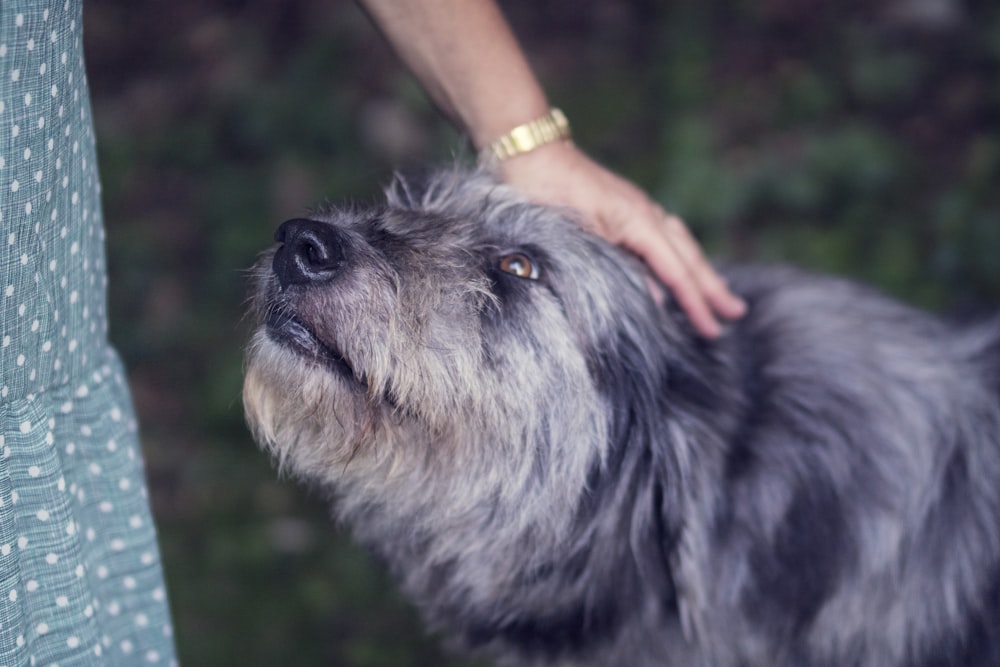Dogs have limited ways of communicating with us, and growling is one of the most effective. Dogs growl in different ways, and you need to understand your dog to be able to decipher their signals. Growling can be a sign of playful affection as well as a warning sign.
If your dog growls when you pet him, you need to consider his body language to understand best why he’s growling. If he’s relaxed, he’s likely to use growling as an affectionate action, similar to a cat purring. However, if his body language is aggressive, he’s likely warning you that he’s feeling frustrated, possessive, angry, or in pain.
This article will explore why dogs growl and how to understand what your dog’s growling means. It will also explore how best to deal with growling if it becomes a problem.
Growling Explored
A growl, unless it is playful, is generally a warning sound. Your dog is telling you something that can be understood if you consider the tone of the growl as well as his ears, tail, and stance (source).
Playful Growling
New dog owners may misinterpret playful growling, but those with experience around dogs can almost always tell playful growling from something more threatening. Playful growling has a softer, lower sound and usually happens during tug-of-war games or roughhousing and chasing.
Dogs, especially puppies, need high-energy play and this kind of growling is not a cause for concern. If it escalates into something more aggressive sounding, especially when playing with other dogs, it can be a good idea to separate them for a time so that they wind down and then resume play.
Dogs may also growl with affection if they are being petted. Their body language will be clearly relaxed, and they are effectively just showing their contentment and asking for more. If the growling becomes demanding, your dog may need more stimulation to tire them out.
Fearful Growling
Your dog may growl if he is afraid. This could be fear of any threat to himself, his pack, including humans, possessions, territory, or food. This kind of growling acts as a warning and aims to keep a distance between the dog and the threat.
The dog’s body language will usually be very stiff and growling low and menacing. The dog’s mouth will usually be closed, to begin with, but he may snarl if the threat keeps approaching.
As an owner, you should remove the threat if possible. This kind of growling can easily escalate into a fight if not attended to.
Aggressive Growling
Aggressive growling indicates a dog’s intention to fight and is a show of dominance. Body language will again be stiff, the hair on the back will be raised, and the snarling will start immediately. His ears may be pinned back, and he will likely also lunge forward (source).
If your dog is growling aggressively at you or a family member, then you need to take notice and respond. The dog may be trying to show his dominance over that family member or is feeling competitive for attention. Either way, it’s important to seek intervention to modify the behavior before it is out of control.
Aggressive growling should be taken very seriously as it will lead to conflict if not controlled. You should immediately remove your dog from the situation, and you may need to explore training techniques.
Injured Growling
This usually occurs when touching a specific part of the body but may include all touch if the dog feels uncomfortable. Your dog is not being aggressive — it’s the only way they can let you know that something hurts.
Your dog may nip if you continue to touch him, so you should always be cautious handling an injured dog. If your dog is growling in pain, it’s best to get medical attention as soon as possible.
Growling During Petting
If your dog is growling while you are petting him, it’s best to consider the types of growling outlined above to deduce what type of growling you are dealing with.
It’s most likely that it is affectionate growling, and your dog is telling you that he is enjoying the attention. Often during this kind of growling, the dog will stick his rear end in the air in a pose called a play bow. This is usually accompanied by lots of loose body wiggling and indicates his intention to play (source).
If, however, he isn’t enjoying the petting, his growl may be a warning. This sometimes happens with young children who are too rough during petting. Your dog can’t ask the child to quit pulling their ears, so they growl to indicate that they don’t like it.
They may interpret the petting as a threat if it is uncomfortable with them and behave accordingly. Always be aware of a dog’s warnings and don’t allow small children to play unaccompanied around dogs, especially dogs they don’t know well.
Finally, your dog may be in pain, and petting him is causing further discomfort. Be aware of whether he growls when you touch specific places so that you can check for an injury and get him to a veterinarian as soon as possible if you suspect that pain is causing the growling.

Dealing With Growling
There are various approaches to dealing with growling. If the dog is growling to communicate fear, frustration, or pain, then the causes of those triggers need to be acknowledged and addressed to influence future behavior (source).
Dogs must be allowed to warn us when they feel threatened, and we must respect that. Building a trusting relationship with your dog depends on this.
If, however, your dog is growling aggressively and it is directed at you or a family member, then the behavior must not be tolerated. There are various schools of thought on punitive measures, although many behaviorists argue that positive reinforcement is more effective.
Aggression will become an issue if it is not dealt with from the start. Still, it’s essential to examine when, where, and how the aggression transpired and then try to work out what the triggers are so that you can address the issue.
You should assess your own behavior to see if your reactions are causing aggression as dogs feed off their owner’s anxiety and negative energy. You must learn to maintain calm, assertive energy (source).
You should also ensure that the dog can be isolated somewhere, such as a kennel or crate. This mustn’t only have negative associations, so use the space not only when the dog is aggressive. Socialization is key to reducing aggression, as is ensuring that your dog gets plenty of exercise.
Aggression towards family members is usually dealt with using behavioral therapy to eliminate triggers and desensitize the dog. Medication may be prescribed to reduce anxiety, and other underlying medical conditions will be considered.
Changes to lifestyle or diet may even be suggested. Most aggression can be improved with consistency and patience, but, in extreme cases, it is sometimes necessary to consider rehoming a pet.
For more on this topic and to further understand the causes of growing, read the article, “My Dog Is Growling at Nothing.”
Final Thoughts
Understanding your dog’s communication is a critical part of being a dog owner. Your dog uses growling to give you important information so that you can better care for him, and you need to be able to interpret it.
Your pet may be telling you that he loves the attention, or that he doesn’t, or even that it’s hurting him, and you need to know which one it is so that you can respond most appropriately.


0 Comments